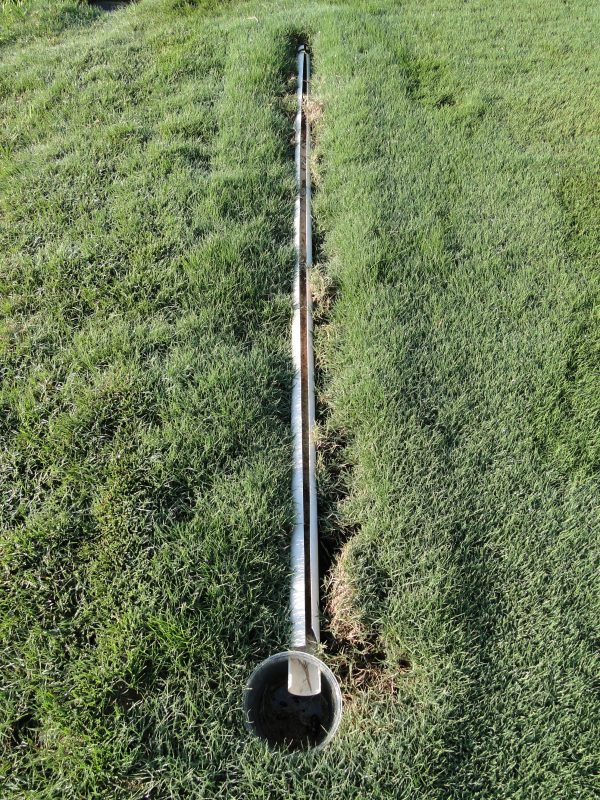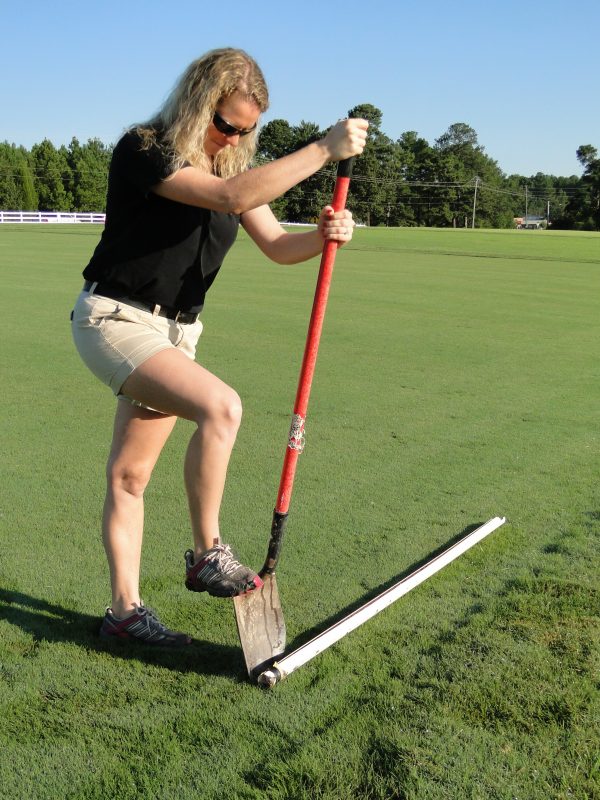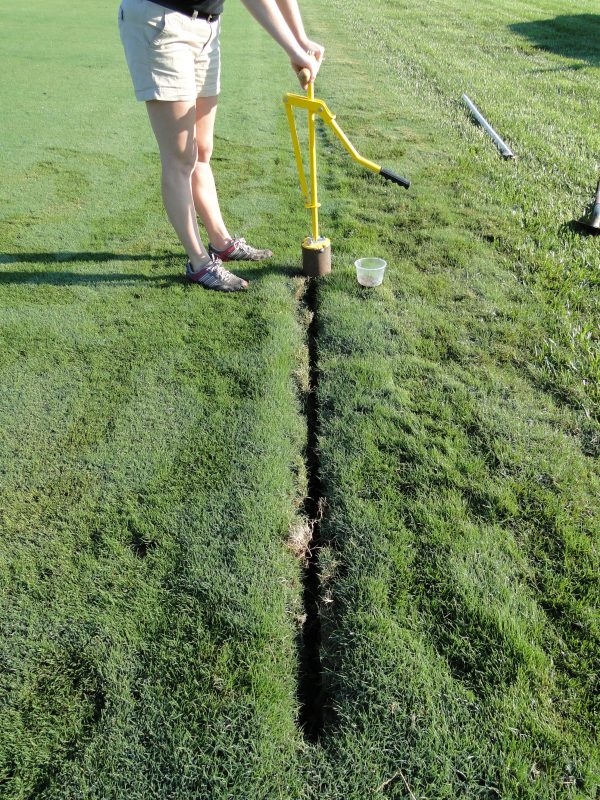Linear Pitfall Traps
Linear pitfall traps are used to monitor any turfgrass insect, mainly mole cricket nymphs, crawling on the turfgrass surface. The insects fall into the trap, walk to the end of the pipe looking for an escape and fall into the cup, where they are unable to climb the slick plastic sides.

How to construct a linear pitfall trap:
Step 1. Take a PVC pipe of desired length (typically 3-5 feet [0.9-1.5 meters]) and cut a slit that is ½-1 inch (1.27-2.5 centimeters) wide down the long side of the pipe.
Step 2. Place a cap on one end of the PVC pipe.
Step 3. Use the PVC pipe as a guide and dig a trench the approximate length and width of the pipe section.
Step 4. Use a standard golf course cup cutter to remove a core of turfgrass from one end of the trench.
Step 5. Take a plastic drinking cup and remove a circle the same diameter of the PVC from the side of the cup. Insert the PVC pipe into the hole. Be sure to cover the opening of the cup with a lid or foil to prevent irrigation or rain from filling the cup.
Step 6. Be sure that the lip of the PVC and cup are flush with the soil surface.
Step 7. Check the cup as frequently as you like.
Note. This method allows you to dig one trap rather than the multiple traps required for the pitfall traps described above; however, it is more time-consuming and destructive to the turfgrass.


The following insects can be monitored with pitfall traps:
- Ants
- Annual bluegrass weevil (adults)
- Billbugs (adults)
- Chinch bugs (nymphs and adults)
- Mites
- Spiders
- Any arthropod crawling along the soil surface
